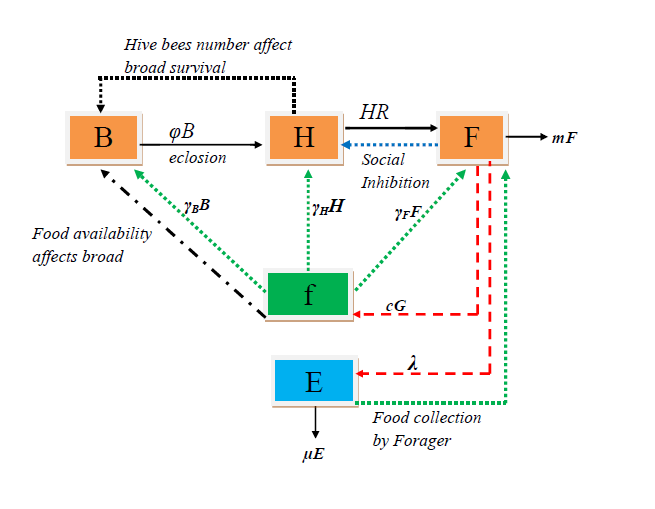Food and environmental degradation as causative agents of honey bee colonies decline: Mathematical model approach
Keywords:
Honey Bees, Colony Collapse Disorder, degradation, EnvironmentAbstract
In this research, a new compartment model of honey bee population is developed to study the effects of gradual change of food availability and environmental degradation on bee population growth and development. The model is proved to be mathematical well posed and a non-trivial equilibrium point is shown to exist and asymptotically stable under certain conditions. The model predicts a critical threshold environmental degradation rate above which the population size of bees decline and subsequently collapse. Low environmental degradation and high food availability leads to stable bee population. Global sensitivity analysis is conducted to determine the most sensitive parameters of the model that can lead to colony collapse disorder. Numerical simulations are conducted to illustrate all the results.

Published
How to Cite
Issue
Section
Copyright (c) 2021 Journal of the Nigerian Society of Physical Sciences

This work is licensed under a Creative Commons Attribution 4.0 International License.
How to Cite
Most read articles by the same author(s)
- Adamu Shitu Hassan, Nafiu Hussaini, Analysis of an HIV - HCV simultaneous infection model with time delay , Journal of the Nigerian Society of Physical Sciences: Volume 3, Issue 1, February 2021







